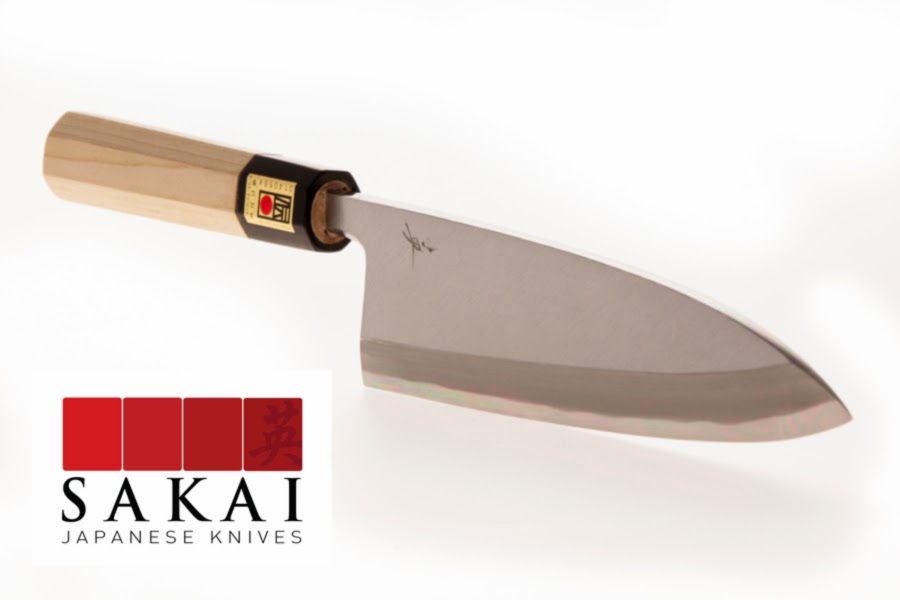The philosophy of the Japanese Handle.
The Japanese knife handle is one that has developed over generations and is very complicated in it's simplicity. As in most good design, often it's a matter of removing everything unnecessary until it's intrinsic value is revealed. Because the blade will last generations the handles are designed to be comfortable and sturdy but also to be replaced when worn out after a lifetime of use. The Japanese have developed an ingenious and collective solution.
 Relationship of materials.
Relationship of materials.
Big leaf magnolia is the most common material used for handles. It is plentiful and easy to shape because of it's straight grain. A closed grain wood that resists water and accepts and holds a natural Japanese wax to make the handle water tight. It has just the right softness to lock on to the blade tang like a vice but just enough toughness to resist wear. Most chefs would agree a natural wood handle is more comfortable to hold and eventually will wear and fit your personal grip. Buffalo horn is used for the bolster to strengthen and support the handle. No glue or pins are needed because each tang is hand mated to it's wooden counterpart. This is unique with the hand made Japanese kitchen knives. The Japanese knife makers have developed this way of securing the handle without glue or pins so the handle can be replaced after a generation of use. This design allows the handle to be removed without disturbing the balance or integrity of the blade. The wood is split and releases the blade. The the new handle is fitted perfectly for another generation of use.
 |
| Split mongolia |
Shape, form and weight of the handle.
First the Japanese focus weight on the blade for the obvious reason, the blade will do the work and the hand is there to guide it. In fact the philosophy behind slicing is that the blade should be a seamless extension of the hand. Therefore it is only natural that the handles are lightweight. Comparing to a western knife where the weight is mostly in the handle to ensure a tight grip to push the knife through the food. In addition Western blades are usually wider and force needs to be applied to push it through the food. Every millimeter of the Japanese blade is designed to slice through food fibers with little resistance. Also the western chefs knife is designed to do just about every type of cutting. It's a good choice for a home kitchen when you will only have one knife but a bad choice for specific needs. In comparison the Japanese chef will have a specific designed blade for a very specific chores. Each designed to cut effortlessly. This is one reason for the collective handle design. With so many knifes the Japanese cooks have come to an consensus for a handle that works well in all the different slicing situations. No matter which task the chef has the grip of the individual knife will feel the same.
 |
| Buffalo horn boiled and softened. When placed on the handle it will shrink and lock it's self in place. |
 |
| Add caption Buffalo horn. Only the tips are used. |
 |
| The tang of the knife blade is burned into the handle to ensure a perfect fit. |







No comments:
Post a Comment